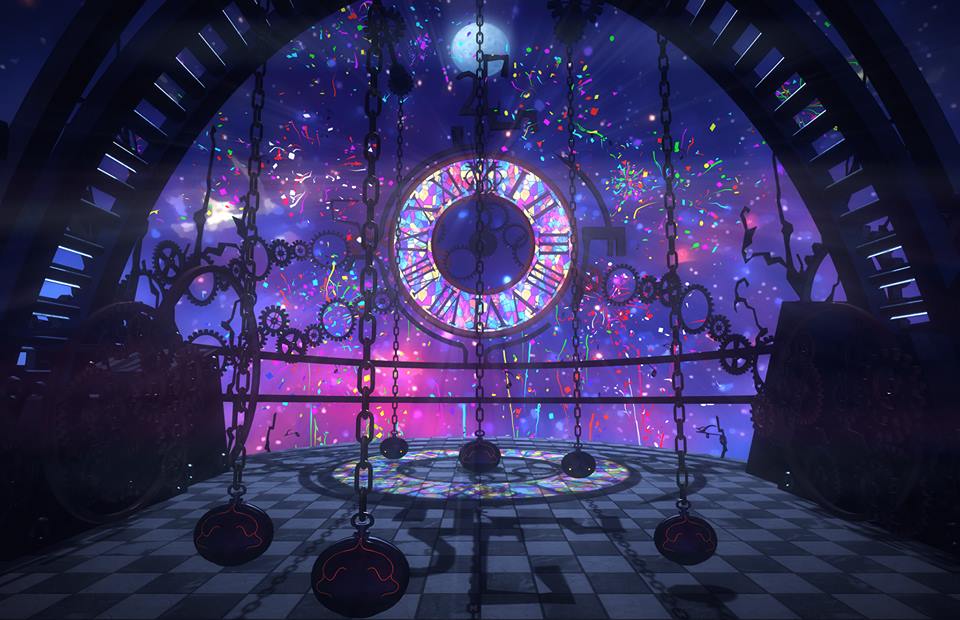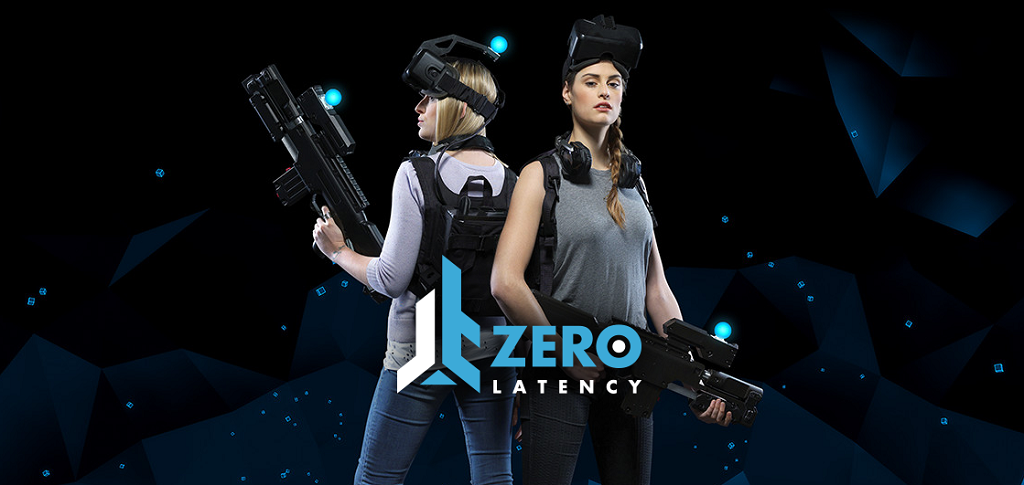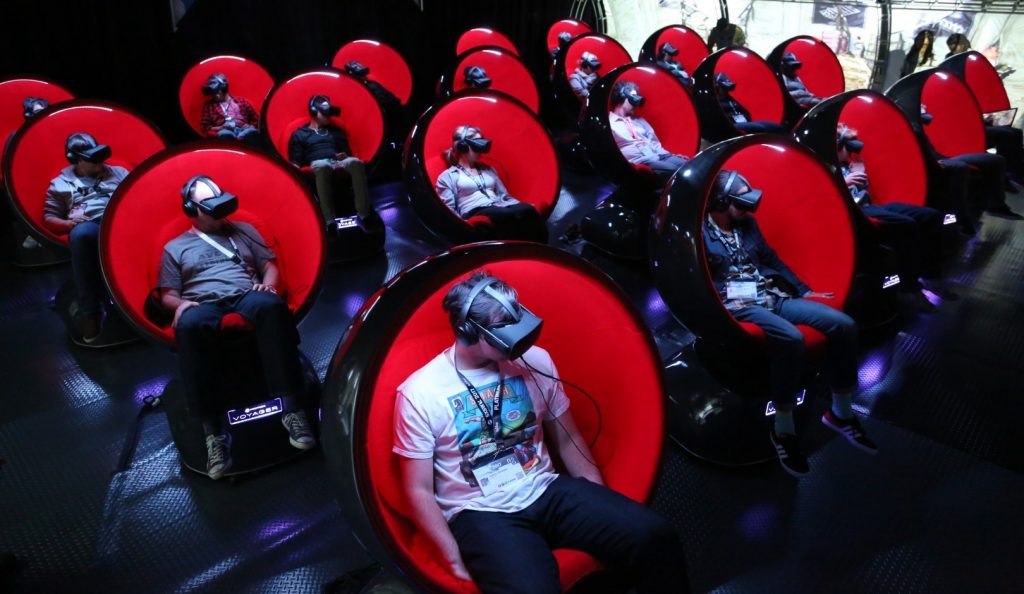
How to choose a VR product for escape room center
It’s hard to deny the fast-growing popularity of virtual reality technology. More and more people use it both in the habitual spheres of their lives (entertainment, study, work), and in the specific spheres (industry, medicine, aviation). Such a wide field of application makes VR a highly multifunctional achievement of science and technology.
The business sphere is no exception. Many companies benefit from virtual reality technology (Oculus Inc., HTC, Microsoft, etc.), as well as game software developers who use this technology to make their games more entertaining. However, it’s worth mentioning that the potential of virtual reality can be revealed in such direction as VR escape rooms.
Escape rooms are games in which a team of players cooperate in order to find clues, solve puzzles, and accomplish tasks in one or more rooms. The goal is to make a certain progress in a limited amount of time. Instead of a physical room filled with various physical objects for the game, players in a VR escape room only need their headsets and controllers to immerse into virtual world full of so much more things. It’s an excellent opportunity to improve communication, working in a team and observation skills.
Unlike ordinary escape rooms, virtual reality escape rooms offer players (who are already quite sophisticated in many ways) a unique and exciting experience. Along with this, new opportunities for business owners come naturally.
In fact, the location-based entertainment (LBE) market has been the key source of income for the developers of VR games in the last few years. There are different categories which may be taken into account while choosing a certain business model. It can be the questions of the space needed, content provided, or the usage of this or that technology. However, when it comes to the VR escape rooms, we offer you to consider the following variants and directions:
VR Arcades
If you’ve never heard of VR arcades before, let’s start with a definition. A VR arcade is a space where anyone can become closer to the understanding of the value of Virtual Reality and Augmented Reality gaming and, of course, experience it. In other words, it’s like a cyber-café, only with VR instead of computers and Internet.
VR arcade business is not difficult to start. You may rent a PlayStation or Oculus and offer this gaming experience to the visitors at your own bar. It involves games and experiences which are available for the usage at home, thus there is a lot of single-player content and a few multiplayer experiences with no precise duration. Also VR arcades presume you’ve played games before, which leads to the conclusion that they aren’t suitable for corporate events or family holidays.
The examples of the companies which use VR arcades in their business are Emergent VR Encounter, Yokey Pokey, Virtualities. The main feature of VR arcades is that such experience allows almost everyone to try it, since virtual reality headsets and other equipment aren’t cheap for some people, while VR arcades let them experience the computer-generated worlds without having to waste a lot of money. Also VR arcade business is space-efficient: for example, Yokey Pokey allows for about 30 gamers to play at the same time at peak times.
Free-roam VR
Another suitable for VR escape room experience can be free-roam VR or warehouse-scale VR since it needs a lot of space. Obviously, when you need to rent such enormous room, it denotes the fact that it’s quite expensive variant for ones business. Free roam VR requires an arena that’s 100-to-200 square meters, plus you need to provide multiple players with all the equipment, including backpacks and guns. What concerns the games – they are of a quite high quality, moreover, these games are LBE-exclusive and designed to be played by groups. Usually the plot of such games is focused around zombie shootings (like Zero Latency’s «Zombie Outbreak»), but other types are do exist as well (for example, Sandbox VR with its pirate adventure).
In terms of profitability, location-based entertainment (LBE) wins since one experience allows up to 6-8 players to participate in the game simultaneously. It also has a high indicator of space efficiency (comparing the revenue per square meter).
Zero Latency is one of the LBE companies that develops virtual reality experiences with free movement. They mainly offer survival escape games (such as Zombie Survival, Singularity, Outbreak Origins), which are designed for up to 8 players.
Avatarico has been doing research in the field of virtual reality since 2012, in 2014 it implemented VR into the game and successfully returned its investments in just 6 months. In 2015, Avatarico developed the first of its kind multiplayer VR escape game Cosmos, which now works in more than 60 cities of America, Europe, and Asia. Avatarico gets 25 square meters as a playground for a team of 6 players.
VR can greatly improve your escape room business and here are the main advantages of the implementation of this technology:
1. Business flexibility
First of all, your business becomes more flexible, thus it’ll determine commercial viability which is the key to success. In order to bring a profit, though, a VR escape room should attract the users and keep their attention and interest. And it’s easy to do – all you need is to select which games to offer to your customers; also you can offer this variety of possibilities to them as well – interactive fantasy games, detective games, social play games and many more – people will definitely be interested.
2. Great earning potential
Without a doubt, any business owner aspires to make a great profit. Good news is that with virtual reality escape rooms it won’t be a problem.
As the action takes place in a simulated environment, there is no need to create a special interior in a room. Diversity and flexibility of VR escape rooms make them a business opportunity with great profit potential. For example, if a room quite often has an average of 5 people, and each room has 10 sessions per day, you can earn more than $2,500 per day and per room, if we take into account that the game fee is about $50 per hour for one person.
3. The expansion of the audience
Since you may offer a large number of various and unusual games, it isn’t so hard to attract a larger audience. People of practically all ages can play (starting from 10 years old). There are also special scenarios both for children and adults, men and women. Moreover, you can add multiplayer games based on popular films, books, games, and series for large groups, so it will also attract much more people. The variety of the games offered is the key to your audience expansion.
4. Game process becomes more pleasant
There is no need to give clues during the gaming process in VR escape rooms, because it often happens that the developers provide special software for their product, so it lets the game go smoother, it simplifies the riddles and provides the necessary hints when someone needs them. All these things definitely simplify the work of the manager.
Of course, we can’t pass some of the disadvantages of VR escape rooms: the headset and controllers for VR cost for about $1000, which is quite expensive. Moreover, you should replace this kit every 1.5-2 years, so it creates additional expenses, as well as the need to rent a room or rooms for the playground and to buy a license for the games. But at the same time, it’s easier to regularly replace a headset and controllers than to reconstruct the entire physical room.
Despite the fact that your VR-related business will attract a lot of people, yet you can’t offer this experience to everyone, since VR escape rooms are not available for some people – for instance, it involves people with epilepsy and similar seizure disorders, deaf or blind people, people with a broken leg or arm and wheelchair users.
About the Author, Anton Zaitsev: Anton started in 2014 with writing real-life escape room scenarios, launching real-life escape rooms as a creative director. He was involved in opening 10 real-life escape rooms in Saint Petersburg, Russia. His company hit the top-3 in terms of bookings per room. And now there are rooms under the brand in Barcelona and Madrid.
In 2015 Anton launched the first VR escape game in the world. He started selling Avatarico VR escape games to escape room owners. Now he is the CEO of Avatarico.
Avatarico created 5 VR escape games and sold them to more than 100 locations across the globe. Since 2015 more than 200,000 customers played these games.
Do you have an article of interest to the escape room community that you would like to post? If so, please contact us at contact@escapetheroomz.com.




